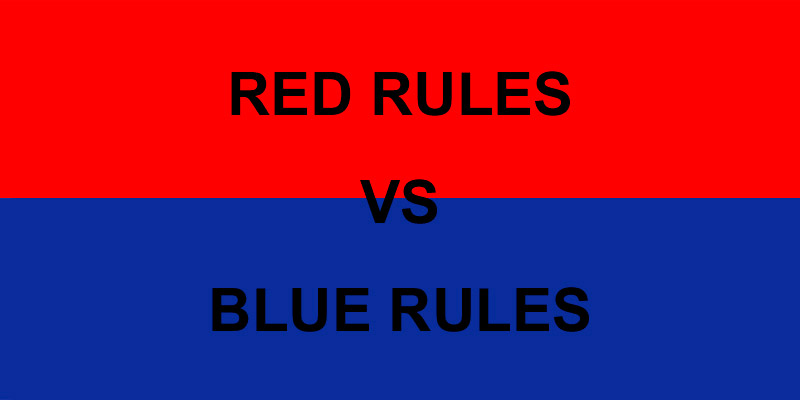Can You Afford to Lose Customers because of Blue Rules?
My daughters were born three years and two days apart, one on January 28th and one on January 30th. A local restaurant has a birthday promotion. If you come in on your birthday, your meal is free.
Now, because our daughters’ birthdays are on the 28th and the 30th, we usually go out to dinner to celebrate on the 29th. So, we called the restaurant and asked if they would honor both birthdays on the 29th, since we wouldn’t be coming in on both the 28th and the 30th. The manager, without missing a beat, said no. When asked why, he said, “That’s the policy.”
His reasoning was simple: the promotion is for the day of the birthday and if you’re not there on your birthday you don’t get a free meal. Rules are rules. Whether I’m bringing in my four-person family or a party of eight, I’m not getting those meals free because it’s not either of their birthdays. Does this make sense to you? If it does, you had better hope it makes sense to your competitor too because it shouldn’t make sense to either of you.
Yes, the restaurant manager was perfectly within his rights not to provide the meals free. But that’s not the point. After he made his ruling, guess where we didn’t go for the girls’ birthday dinner? And guess where we didn’t go for my birthday or my wife’s birthday?
Let’s add up the lost business. On my daughters’ birthdays, they would have provided two free meals and been paid for two meals. On my birthday, they would have provided one free meal and been paid for three. On my wife’s birthday, one free meal and three paid meals. So, three visits, four free meals and at least eight paid meals never happened. Sometimes, my daughters bring a friend, or we go out with several friends. But rules are rules. I also didn’t tell other people about this restaurant that will give you a free meal on your birthday. However, I did tell others this disappointing story in person, when I speak and train, Facebook, AND in my book, “It’s Not Rocket Service: Managing, Meeting and Exceeding Customer Expectations.”
There are really only two types of rules in business: red rules and blue rules. Red rules are those that cannot be broken under any circumstances. They usually have to do with safety, health, legal, ethics and BIG financial. You must have rules to keep everybody safe and healthy. You have to be ethical. If the government says you can’t do it, you can’t do it. And you need rules so you don’t give away the store. Blue rules are … everything else. You can apply them if it means making the customer happy without costing the company an enormous amount of money. You know which rules in your business are red and which are blue. They’re usually pretty obvious.
Once you know which rules are blue, you have to decide under what circumstances your people can apply them – when, where, why, and for whom.
When can they be bent? Why can they be bent? For whom can you apply it? There are certain customers who are worth bending rules for, and others who are not. You don’t have to bend the rule for everybody.
The restaurant manager’s policy apparently had no wiggle room or he had no wiggle room. Either way, he couldn’t change the rule and wouldn’t find a way around it.
Here’s an exercise for you. You can do this by yourself or in a group from your workplace.
- Take five minutes and write down as many current company policies and rules as you can.
- Decide whether they are red rules or blue rules.
- If it is a red rule, write down why it’s a red rule. Remember, red rules usually have something to do with health, safety, legal, ethics and BIG financial. If it doesn’t fit into any of those categories, it is a blue rule. There are no purple rules – only red or blue.
- If it is a blue rule, decide when the rule can be applied, how it can be applied, why it can be applied and for whom it can be applied. These are the guidelines you will give your people so they can make decisions about the rule.
- Review your red rules again. Ask yourself again, “are there any circumstances under which I can bend this rule?” Chances are, you’ll move a few from red to blue.
Back to our restaurant manager: Food is not the top expense in running a restaurant. That’s why restaurants give away free meals in two-for-ones and for birthdays. Because that particular restaurant decided not to give away the birthday meals, it lost a customer who would have visited several times this year … and next year, too. With businesses – especially restaurants – engaged in an ongoing competitive atmosphere and with customers having more and more ways not to do business with certain places, can you afford to lose even one customer because of insisting on making “Blue rules” Red?



